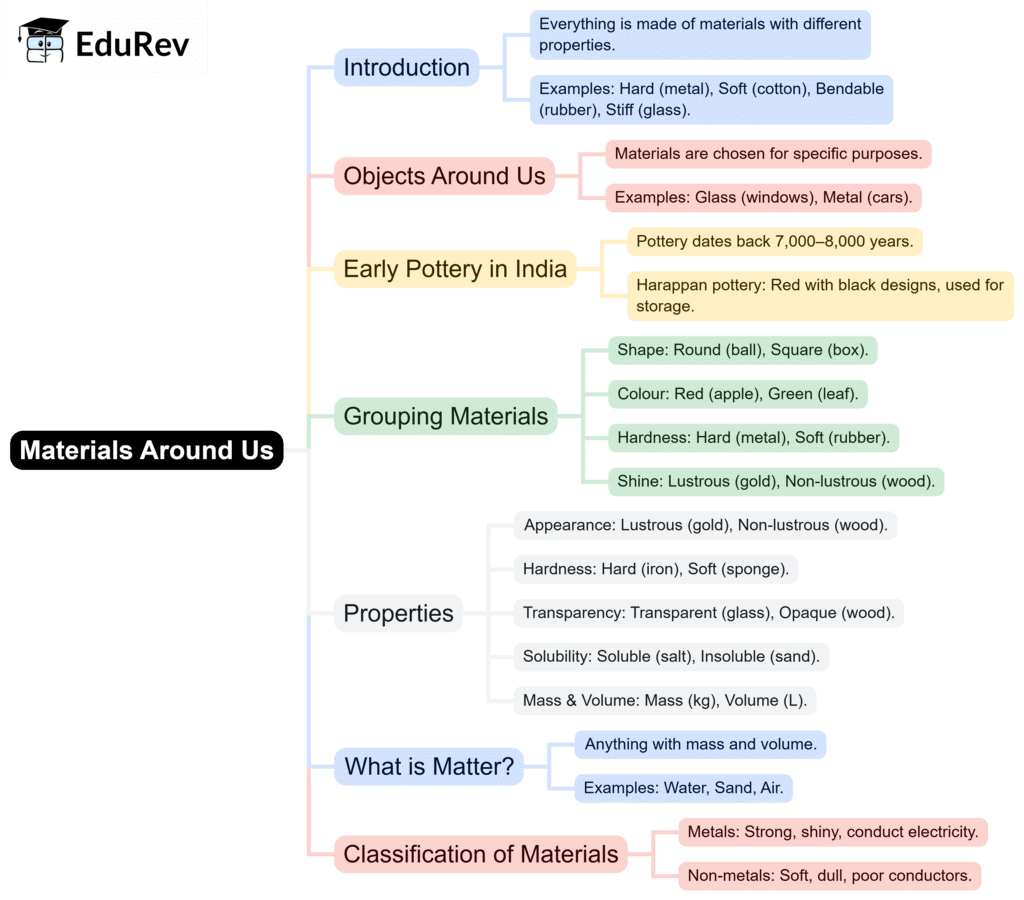Class 6 Exam > Class 6 Notes > Science Olympiad Class 6 > Mind Map: Materials Around Us
Mind Map: Materials Around Us | Science Olympiad Class 6 PDF Download

The document Mind Map: Materials Around Us | Science Olympiad Class 6 is a part of the Class 6 Course Science Olympiad Class 6.
All you need of Class 6 at this link: Class 6
|
48 videos|116 docs|89 tests
|
FAQs on Mind Map: Materials Around Us - Science Olympiad Class 6
| 1. What are the different types of materials we encounter in our daily lives? |  |
Ans. In our daily lives, we encounter various types of materials, which can be broadly categorized into natural and synthetic materials. Natural materials include wood, cotton, and metals like iron and gold, while synthetic materials are man-made, such as plastics, glass, and synthetic fibers. Each type has unique properties and uses.
| 2. How do we differentiate between solids, liquids, and gases? |  |
Ans. We can differentiate between solids, liquids, and gases based on their shape and volume. Solids have a fixed shape and volume, like a rock or a table. Liquids have a fixed volume but take the shape of their container, such as water in a glass. Gases do not have a fixed shape or volume and will expand to fill the space available, like air in a balloon.
| 3. What are the properties of materials that make them suitable for specific uses? |  |
Ans. The properties of materials that determine their suitability for specific uses include hardness, flexibility, conductivity, density, and resistance to heat or corrosion. For example, metals are often used for construction due to their strength and durability, while rubber is used for tires because of its flexibility and grip.
| 4. Why is it important to recycle materials? |  |
Ans. Recycling materials is important because it helps conserve natural resources, reduces waste in landfills, and lowers pollution levels. By recycling materials such as glass, paper, and plastic, we can reduce the need for raw materials, save energy, and minimize the environmental impact of producing new products.
| 5. How do the properties of materials affect their behavior in different conditions? |  |
Ans. The properties of materials, such as thermal conductivity, melting point, and tensile strength, affect their behavior under different conditions. For instance, metals expand when heated, while some materials like rubber can become brittle in cold temperatures. Understanding these properties helps in selecting the right materials for specific applications, ensuring safety and efficiency.
Related Searches
















